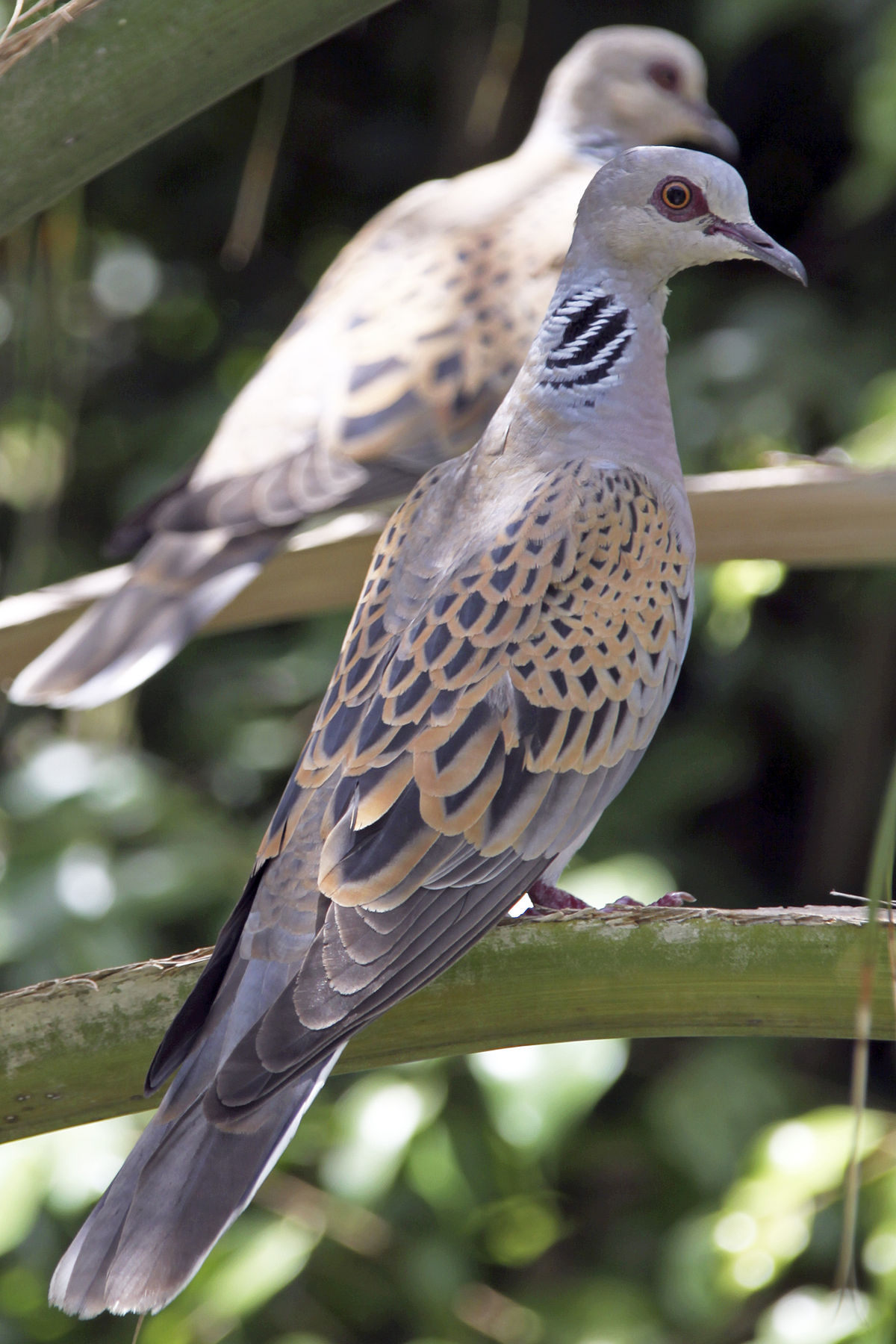Turtle dove
(Streptopelia turtur)

Description
Smaller and slighter in build than many other doves,it measures 24–29 cm (9.4–11.4 in) in length,47–55 cm (19–22 in) in wingspan and weighs 85–170 g (3.0–6.0 oz).the European turtle dove may be recognised by its browner colour,and the black-and-white-striped patch on the side of its neck.The tail is notable as the bird flies from the observer;it is wedge shaped,with a dark centre and white borders and tips.When viewed from below,this pattern,owing to the white under-tail coverts obscuring the dark bases,is a blackish chevron on a white ground.This can be seen when the bird stoops to drink and raises its spread tail.The mature bird has the head,neck,flanks,and rump blue grey,and the wings cinnamon,mottled with black.The breast is vinaceous,the abdomen and under tail coverts are white.The bill is black,the legs and eye rims are red.The black and white patch on the side of the neck is absent in the browner and duller juvenile bird,which also has the legs brown.The turtle dove,one of the latest migrants,rarely appears in Northern Europe before the end of April,returning south again in September.It is a bird of open rather than dense woodlands,and frequently feeds on the ground.It will occasionally nest in large gardens,but is usually extremely timid,probably due to the heavy hunting pressure it faces during migration.The flight is often described as arrowy,but is not remarkably swift.arrival in spring is heralded by its purring song,a rather deep,vibrating “turrr,turrr”.Despite the identical spelling,the "turtle" of the name,derived from Latin turtur,has no connection with the reptile;"turtle" in this case came originally from Latin tortur,onomatopoeic for the song.The genus name Streptopelia is from Ancient Greek streptos,"collar" and peleia,"dove".
Taxonomic tree:







